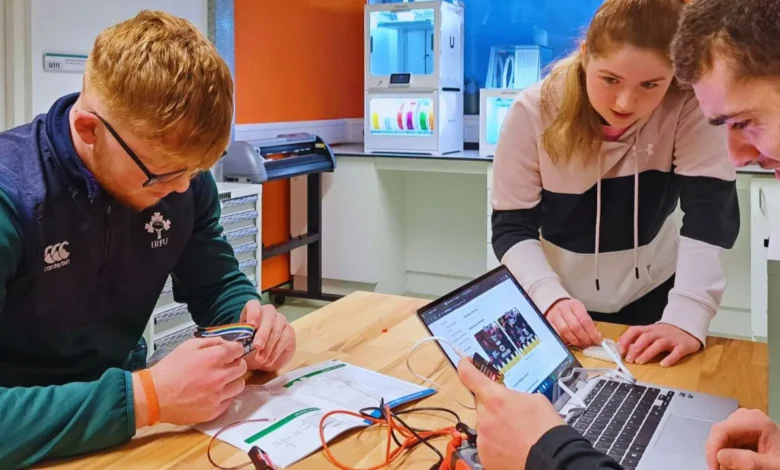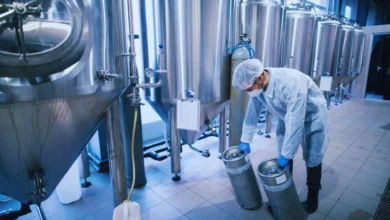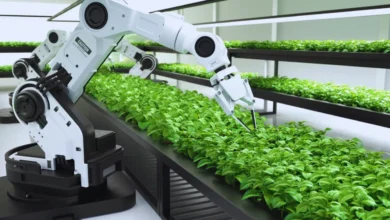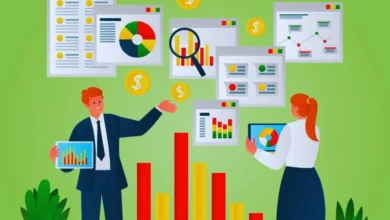
Post-Harvest Technology: Enhancing Agricultural Processes in 2025
Post-harvest technology is revolutionizing modern agriculture by enhancing the preservation, processing, and distribution of crops. With the increasing global population and higher food demand, these technologies are becoming crucial in minimizing waste, extending shelf life, and maintaining the nutritional value of produce. This sector focuses on the innovations and tools that help farmers and food producers achieve better quality yields while ensuring sustainability.
As the agriculture industry continues to embrace these technological advancements, post-harvest processes are becoming more efficient, reducing losses and improving productivity. How post-harvest technology contributes to maximizing yield quality, improving food security, and driving sustainable farming practices in 2025 and beyond.
Key Post-Harvest Technologies
| Technology | Purpose | Key Benefit | Example Application |
| Cooling Systems | Maintain product temperature | Extends shelf life | Refrigeration for fruits and vegetables |
| Drying Technology | Reduces moisture content | Prevents mold and spoilage | Sun drying, mechanical drying |
| Packaging | Protects produce during transit | Minimizes damage, preserves freshness | Modified atmosphere packaging |
| Storage Systems | Long-term preservation of produce | Maintains quality over time | Controlled atmosphere storage |
Why Post-Harvest Technology Is Vital
The global food industry faces numerous challenges related to food waste, storage issues, and transportation. A significant portion of the food produced worldwide is wasted after harvest due to improper storage, handling, or inadequate transportation. For instance, fruits, vegetables, and grains are perishable items that require proper post-harvest management to ensure that they reach consumers in good condition. Post-harvest technology plays an role in reducing this waste, providing better storage conditions, and improving the overall quality of the harvested products.
By integrating post-harvest technology into the farming process, farmers can manage and handle their produce more efficiently, minimize spoilage, and reduce loss during the post-harvest phase. Additionally, these technologies contribute to food security by ensuring that a higher proportion of harvested crops is available for consumption.
Types of Post-Harvest Technologies
Post-harvest technologies include an array of techniques and systems designed to improve the overall quality, preservation, and efficiency of produce handling, thus ensuring that crops reach consumers in optimal condition. As global demand for food rises, these technologies play a vital role in reducing waste, extending shelf life, and preserving the nutritional value of harvested goods. Below are some key types of post-harvest technologies that are for improving the efficiency and sustainability of modern agriculture:
Cooling and Refrigeration Systems
Cooling and refrigeration are some of the most widely used post-harvest techniques for preserving the freshness of perishable produce. By maintaining the right temperature, these systems slow down the metabolic activities of fruits, vegetables, dairy, and meat products, preventing premature spoilage. Refrigeration plays an role in extending the shelf life of these products, allowing them to remain fresh during storage and transit, particularly when they need to be transported over long distances or stored for extended periods.
Drying Techniques
Drying is another critical post-harvest technology used to reduce the moisture content of crops, which helps prevent microbial growth and increases the durability of produce. From traditional sun drying to more advanced methods like freeze-drying and hot-air drying, these techniques are pivotal in preserving a wide range of food items. Grains, fruits, herbs, and spices, for example, are often dried to make them shelf-stable for longer storage and use without compromising their flavor or nutritional content.
Packaging and Modified Atmosphere Packaging (MAP)
Packaging technology plays a central role in reducing physical damage to crops during handling, as well as preserving the freshness and quality of agricultural products. Modified Atmosphere Packaging (MAP) is an advanced technique that alters the composition of gases within packaging, such as reducing oxygen and increasing carbon dioxide levels, to slow down the ripening process and extend shelf life. MAP is particularly effective for maintaining the quality of fresh produce, meats, seafood, and other perishable items, ensuring they reach consumers with minimal degradation.
Storage Technologies
Effective storage technologies are crucial in preventing the premature deterioration of post-harvested crops. Techniques like Controlled Atmosphere (CA) and Modified Atmosphere Storage (MAS) regulate the levels of oxygen, carbon dioxide, and humidity within storage environments to maintain the freshness and quality of produce for extended periods. These technologies are used extensively for fruits like apples, pears, citrus, and berries, helping to keep them fresh and nutritious throughout the supply chain, from harvest to consumption.
The Role of Technology in Reducing Post-Harvest Losses
Post-harvest losses have significant economic, environmental, and food security implications. A large percentage of the global food supply is wasted post-harvest due to inadequate infrastructure and technology. With advancements in technology, farmers, distributors, and retailers can work together to reduce these losses by implementing efficient processes, storage, and transportation systems. Technology can help improve the resilience of the food supply chain, particularly in areas where resources are limited.
Challenges in Post-Harvest Technology Adoption
Despite the benefits of post-harvest technology, there are several challenges associated with its adoption. These challenges range from the cost of implementing such technologies to the lack of awareness among farmers and agricultural workers. In developing countries, where resources are limited, the initial investment required to acquire modern post-harvest technology can be prohibitive. Moreover, the lack of skilled labor and technical knowledge makes it difficult to use these technologies effectively. Addressing these challenges will require collaboration between governments, NGOs, and the private sector.
The Future of Post-Harvest Technology
As agricultural needs continue to evolve, post-harvest technology will play an increasingly important role in ensuring the global food supply can meet the demands of a growing population. The future of post-harvest technology is focused on developing sustainable, cost-effective, and scalable solutions. Innovations such as smart storage solutions, real-time monitoring systems, and data-driven supply chains are expected to reshape the post-harvest industry.
Additionally, the growing emphasis on sustainability will drive the development of environmentally friendly technologies that reduce energy consumption and waste during the post-harvest phase. By 2025 and beyond, it is anticipated that post-harvest technology will continue to evolve, making food production more efficient and reducing waste on a global scale.
- Smart Storage Solutions: The future of post-harvest technology will see a surge in the use of smart storage systems that use sensors and IoT devices to monitor and regulate environmental factors like temperature, humidity, and oxygen levels. These systems will ensure optimal conditions for preserving produce, reducing spoilage, and extending shelf life. By leveraging artificial intelligence, these systems can adjust settings autonomously based on real-time data, resulting in more efficient storage that requires less human intervention and minimizes waste.
- Real-Time Monitoring Systems: Post-harvest processes will be significantly enhanced by real-time monitoring systems that track the conditions of crops during transportation and storage. Using advanced sensors and GPS technology, these systems will monitor critical parameters such as temperature, humidity, and the ripeness of produce. This data will be sent to cloud-based platforms where it can be analyzed to detect potential issues, such as spoilage or contamination, and corrective action can be taken before any losses occur.
- Data-Driven Supply Chains: The use of big data in the post-harvest industry will revolutionize supply chain management. By analyzing vast amounts of data from various points in the production and distribution chain, companies can optimize routes, inventory levels, and storage conditions. Predictive analytics will help forecast demand more accurately, reducing food waste by ensuring the right amount of produce reaches the right markets at the right time. Data will also help identify inefficiencies and areas where resources can be saved.
- Environmental Sustainability Focus: As the pressure to address climate change grows, post-harvest technologies will increasingly focus on sustainability. Future advancements will aim to reduce energy consumption, water usage, and the carbon footprint associated with food preservation and storage. Technologies like solar-powered cooling systems, energy-efficient drying methods, and sustainable packaging solutions will play a key role in making the post-harvest phase more eco-friendly, ultimately contributing to a greener food system.
- AI-Driven Quality Control: Artificial intelligence will drive the next generation of quality control systems in post-harvest processing. AI-powered machines will be able to automatically sort, grade, and pack produce based on quality, ripeness, and size, ensuring consistency and precision. These systems will significantly reduce the likelihood of human error and increase throughput while maintaining high standards of produce quality. Furthermore, AI will also help in detecting defects or diseases in crops at early stages, allowing for proactive management.
- Biodegradable Packaging Innovations: The future of post-harvest packaging will focus on eco-friendly alternatives to traditional plastic packaging. With growing environmental concerns, innovations in biodegradable and compostable packaging materials will reduce the environmental impact of the food industry. These materials will preserve food quality while reducing the need for harmful plastics, offering a more sustainable solution to packaging that aligns with global efforts to reduce waste and pollution.
- Cold Chain Advancements: Cold chain logistics will continue to evolve with advancements in refrigeration technologies. Future innovations will provide more efficient, cost-effective, and environmentally friendly cold storage solutions for perishable goods. Improved cold storage units will maintain consistent temperature conditions during transportation and storage, preserving the freshness of fruits, vegetables, dairy, and meats. Technologies like phase-change materials and solar-powered refrigeration systems will help improve the cold chain while reducing energy costs.
- Blockchain for Traceability: Blockchain technology will play a pivotal role in ensuring transparency and traceability throughout the post-harvest process. By using decentralized and tamper-proof digital ledgers, blockchain can provide detailed records of a product’s journey from farm to table. This will help verify the quality, origin, and safety of food products, increasing consumer confidence and helping to prevent food fraud. Additionally, blockchain’s ability to track shipments in real time will make supply chains more efficient and responsive to changes in demand.
- Integrated IoT Systems: The integration of IoT (Internet of Things) devices into post-harvest operations will create a more connected and efficient supply chain. Smart sensors, RFID tags, and automated systems will communicate seamlessly across different stages of the food distribution process, from harvesting to transportation and storage. This interconnected system will help identify potential issues in real time, such as temperature fluctuations or delayed shipments, allowing for quick adjustments to mitigate risks and ensure quality control.
- Robotics in Post-Harvest Handling: Robotics will increasingly automate delicate tasks in the post-harvest phase, such as sorting, packing, and even harvesting crops. Advanced robotic arms equipped with machine vision will be able to handle delicate produce like fruits and vegetables with precision, reducing the risk of damage. Robotics will also improve the efficiency of packing processes, speeding up the time from harvest to market and reducing labor costs. The use of robots will also contribute to food safety by minimizing human contact with produce.
- Sustainable Waste Reduction: As part of the global effort to reduce food waste, post-harvest technologies will focus on repurposing by-products and waste from the harvest process. These technologies will recycle organic waste into valuable products such as organic fertilizers, animal feed, or even biofuels. This will reduce the environmental impact of agricultural waste and create new revenue streams. Additionally, sustainable waste management solutions will be implemented in processing plants to reduce the amount of waste sent to landfills, further supporting a circular economy within the agricultural sector.
Wrapping Up
Post-harvest technology is for the sustainable growth of agriculture. Its innovations in crop preservation, shelf-life extension, and waste reduction are critical in meeting the global demand for food. As the agricultural industry faces increasing pressure from a growing population, post-harvest advancements will be key to enhancing productivity, ensuring food security, and reducing environmental impact. Embracing these technologies helps build a resilient food system, improving yields while mitigating the challenges posed by climate change.
As agricultural practices evolve, the role of post-harvest technologies will only become more vital. The introduction of smart solutions, real-time monitoring systems, and environmentally sustainable practices will help shape the future of food production. The continued development and adoption of post-harvest innovations will significantly reduce food waste, optimize crop storage, and contribute to a more sustainable food supply chain. The future of agriculture lies in these technologies, promising a more efficient and sustainable approach to global food security.
FAQs
What is the main purpose of post-harvest technology?
The primary purpose of post-harvest technology is to enhance the quality and shelf life of harvested crops, reduce losses, and improve the efficiency of storage, handling, and transportation. This ensures that food reaches consumers in optimal condition, benefiting both producers and consumers.
How Does Refrigeration Help in Post-Harvest Management?
Refrigeration plays a critical role in post-harvest management by slowing down the respiration process of perishable items, which helps to prevent premature ripening and spoilage. By lowering the temperature, refrigeration slows down the metabolic activities of fruits, vegetables, dairy products, and meats. This technology is for extending the shelf life of these products, maintaining their freshness, nutritional value, and overall quality for longer periods.
What are the benefits of Modified Atmosphere Packaging (MAP)?
MAP helps preserve the quality and freshness of food by controlling the levels of oxygen, carbon dioxide, and humidity inside packaging. This extends the shelf life of products, reduces spoilage, and maintains nutritional value.
How does drying technology benefit crops?
Drying technology reduces the moisture content of crops, making them less prone to mold and spoilage. This helps preserve crops for longer storage and transport, ensuring they remain usable and safe for consumption.
What are the challenges in adopting post-harvest technology?
Some challenges include high initial investment costs, lack of technical expertise, and limited access to resources, particularly in developing countries. Educating farmers and improving access to affordable technologies are for broader adoption.
Can post-harvest technology help in reducing food waste?
Yes, post-harvest technologies like cooling, drying, and proper storage help reduce food waste by ensuring that harvested crops are preserved efficiently, allowing them to reach consumers without spoiling.
What is the future of post-harvest technology?
The future of post-harvest technology is focused on sustainability, automation, and data-driven solutions. Innovations like smart sensors, AI-powered systems, and environmentally friendly techniques will drive the future of food preservation and storage.





